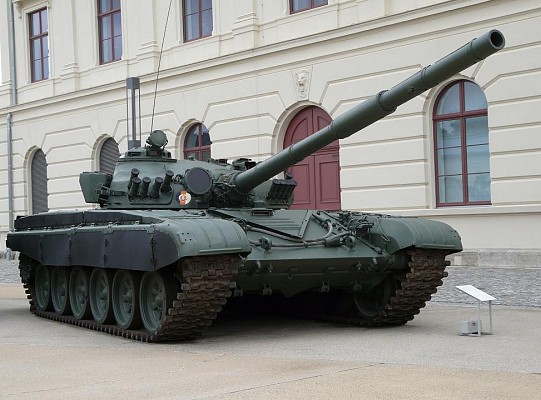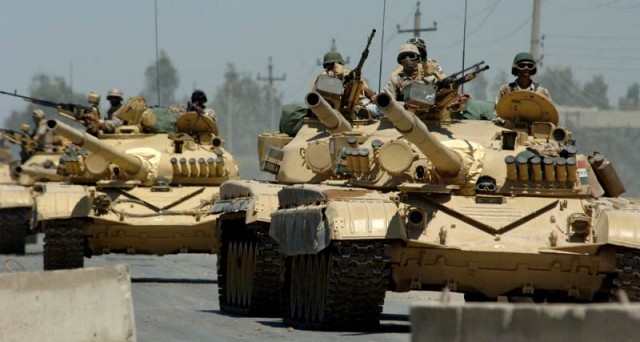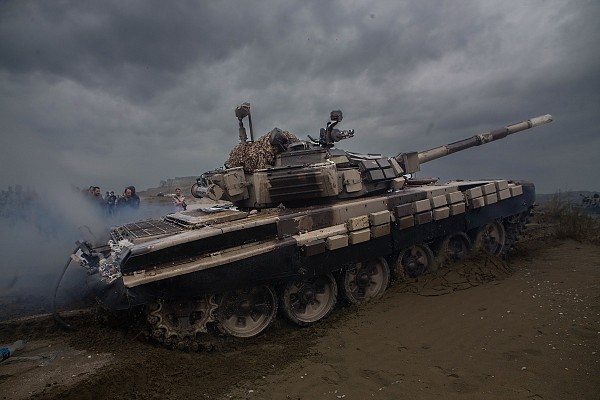T-72M
Soviet export variants of the T-72
Overview

T-72M
Former East German army T-72M main battle tank on display in a military museum in Dresden.
Source: Billyhill -
© CC By 3.0
1980 for T-72M
1982 for T-72M1
1987 for T-72S
Czechoslovakia - ZTS Martin
Poland - Bumar-Łabędy
India
Iran
Shilden (nickname for T-72S)
Description
Introduction
The T-72M is a late Cold War era main battle tank of Soviet origin. These are export models of the T-72. Although the T-72 is an iconic Soviet tank the majority of these export models have been produced in the Warsaw Pact and in India. The export models were often a generation behind their Soviet counterparts and lacked some of the more sophisticated modules. In the West these were often dubbed "monkey models". However, all but the earliest export models were not that different in performance.
Design
Export models of the T-72 have been produced in several dozen configurations. The first were derived from the T-72 Ural. The vast majority, being the T-72M and M1 models, are a downgrade of the Soviet T-72A. The major differences are the simplified armor scheme, simpler sights and fire control system and more basic set of 125mm ammunition being used.
Firepower
The main armament is a 125mm smoothbore gun connected to a carousel type autoloader. A total of 22 rounds are ready to fire, with maximum ammunition load differing per variant, with a maximum of 45 rounds. Early models featured the 2A26M2, but most T-72M have the 2A46-1 main gun. The range of ammunition includes APFSDS, HEAT and HE-Frag. The T-72S has the 2A46M gun and can launch the 9M119 anti-tank guided missile from the barrel. A 7.62mm PKT machine gun is mounted as coaxial armament. A 12.7mm NSVT heavy machine gun is mounted at the commander's cupola.
Protection
The protection level is where the T-72M export models differ the most from their Soviet counterparts. The T-72M has a welded steel hull with the thin early T-72 Ural protection level. The cast turret does not feature any of the improvements, such as laminate armor. The T-72M1 did feature laminate inserts in the turret and had an additional plate over the glacis. However, at the time the T-72A and B already had further increased levels of protection. For many years the T-72M also lacked the smoke grenade launcher, improved NBC system and side skirts. Although various nations retrofitted these at a later stage. Neutron liners were never fitted to any T-72M variant.
Mobility
The T-72M is powered by the same V-46-6 supercharged V12 diesel engine as the T-72 and T-72A. Due to having less armor and thus a lower combat weight the T-72M actually has a slight increase of mobility over the T-72A. Maximum speed is 60 km/h on road and about 30 to 35 km/h in the field. Reverse speeds are very low at 5 km/h maximum.
Users
The T-72M was produced in large numbers in Poland and Czechoslovakia for Warsaw Pact use and for export sales, mostly to the Middle East. India produced a significant number of T-72M1 as well. The Soviet Union produced various batches of export models. Although the Soviet Union financed most of the export T-72s, it actually produced a limited number in their own factories. Iraq and Syria have used their T-72M in various conflicts. Many export model T-72s remain in service today.
Variants

T-72M
Iraqi T-72M without skirts in use with the post Saddam Hussein Iraqi army.
Source: US Army (Staff Sgt. Kevin L. Moses Sr.) -
© public domain
List of T-72 export models
Details
Media
Subcomponents

125mm 2A46-1
The 2A46-1 cannon was introduced on the T-72M and later models of the export T-72. The 2A46M is used on the T-72S.
Related articles

T-72 Ural
The very first export models of the T-72 were akin to the very first generation of T-72.

T-72A
The vast majority of T-72 export models are the T-72M and M1, which are a downgrade versions of the T-72A.





















